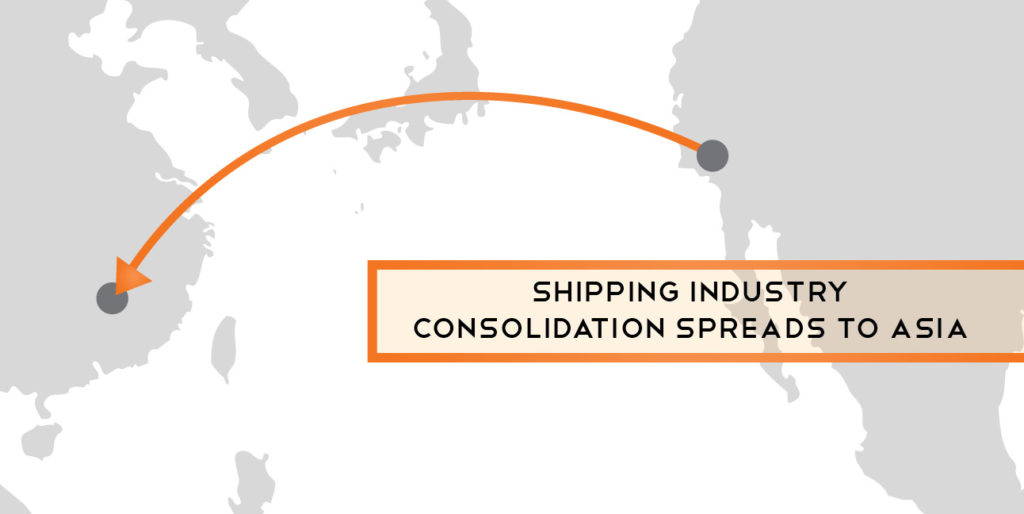To date, 2016 has been one of most transformative years in the shipping industry. Ocean liner over-capacity (Wall Street Journal cites 30% over-capacity of ships on open water) and a less-than-stellar world economy have driven shipping rates lower and lower forcing the hands many ocean carrier liners to band together or disappear.
With the majority of the world’s largest container ports residing in Asia, this continent has seen unprecedented alliances and consolidations take place over the last year. As an alliance, shipping companies share networks and port calls, saving millions in a reciprocal relationship, but many are going one step beyond that and merging completely.
Here’s a quick snapshot:
February 2016: The China Cosco Shipping Corporation was officially launched in Shanghai and represents the merger of China Ocean Shipping Group and China Shipping Group. Their combined fleet will now be 832 vessels!
June 2016: CMA CGM SA (3rd largest shipper) assumed control of Neptune Orient Lines (also APL). This is the industry’s biggest acquisition in a decade.
July 2016: Hapag-Lloyd and United Arab Shipping signed a merger agreement becoming the 5th largest shipping company world-wide.
November 2016: Japan’s 3 biggest shippers, Nippon Yusen KK, Mitsui OSK Lines and Kawasaki Kisen Kaisha announced their merger and will now become the 6th largest international player. Their merger will become official in July, 2017.
December 2016: Maersk Line announced it has reached an agreement to acquire German container shipping line Hamburg Süd (the world’s 7th largest container shipping line).
2017: Because of recent mergers, alliances and acquisitions, the top 7 carriers will control around 65% of shipping capacity (Per Tim Smith, Chairman of Maersk China). While there were 20 lines operating at the start of 2016, 2017 will see that number reduced to just 14.
The fallout from Hanjin Shipping going under in July 2016 has clearly helped expedite the trend toward new alliances. With major industry leaders shaking hands and signing on the dotted line left and right, the age-old saying comes to mind: Is this too much of a good thing? Will all these consolidations make a significant impact on the bottom line and give the shipping industry a much-needed shot of adrenaline?
Some say consolidations such as these will bring much needed stability into the market, help regulate rate fluctuation and retain jobs. Others think this is merely a band-aid or temporary solution to the larger problem – a steady decrease in demand – and something that (no matter how many mergers take place) carrier companies cannot control. Alongside mergers and alliances, some think that the shipping industry must “trim the fat” and drastically reduce capacity to remain viable in today’s global market.
Industry pundits predict that steamship lines’ contract and spot market pricing will increase, or need to increase, during 2017 contract negotiations. However, that would require a certain amount of “collusion” amongst the steamship lines, and/or a willingness to let their largest customers go to a rival carrier for a lower TEU price. History shows us that carriers are more concerned about keeping their vessels full, rather than focusing on an increase in margin, which is why capacity plays a bigger role in higher margins than price per unit.
At TOC Logistics, we maintain a value focus on lowering spend through efficient processes, higher visibility and optimization, rather than lowering price. Our focus will always stay with you, the customer, and our operational practices result in less risk, despite the steamship lines’ troubles.
Read more about what TOC stands for.
Sources:
http://www.supplychaindive.com/news/cosco-china-shipping-merger-explainer/427797/
http://www.wsj.com/articles/shipping-mergers-to-remake-global-alliances-1460479203

